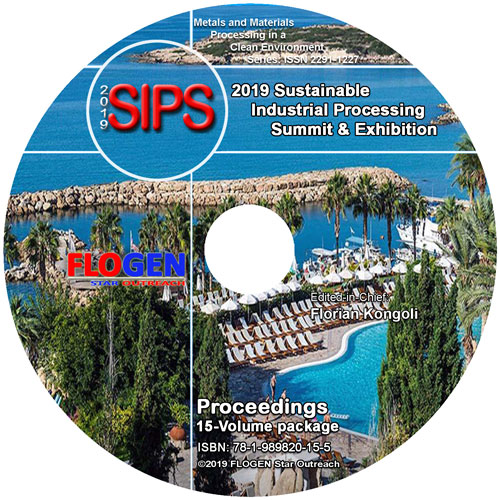2019-Sustainable Industrial Processing Summit
SIPS2019 Volume 8: Usui Intl. Symp. / Advanced Sustainable Iron and Steel Making
| Editors: | F. Kongoli, P. Assis, M.C. Gomez-Marroquin, S. Kitayama, H. Konishi, A. Murao, S. Nomura, H. Ono, H. Saxen, K. Seto, J.I. Tani |
| Publisher: | Flogen Star OUTREACH |
| Publication Year: | 2019 |
| Pages: | 250 pages |
| ISBN: | 978-1-989820-07-0 |
| ISSN: | 2291-1227 (Metals and Materials Processing in a Clean Environment Series) |

CD shopping page
Gas Permeability Improvement at the Lower Part of Blast Furnace by Converter Slag Injection from Tuyere
Shunsuke Hori1; Akito Kasai1; Rikizo Tadai1; Kentaro Nozawa1;1KOBE STEEL, LTD., Kakogawa, Japan;
Type of Paper: Invited
Id Paper: 420
Topic: 2
Abstract:
One significant operational problem in increasing pulverized coal rate and decreasing coke rate must be the increased pressure drop or the worsened gas permeability at the lower part of the blast furnace. In order to improve gas permeability around the blast furnace bird’s nest region during high pulverized coal injection rate operation, flux injection technology from the tuyere is surveyed with the purpose of decreasing slag hold-up. In this study, converter slag is focused on as the flux material. The advantages of converter slag are its low melting point due to high FeO content and its smaller endothermic quantity as a pre-melt slag. Results obtained by experiments and actual blast furnace tests are as follows:
(1) Converter slag was expected almost completely to be smelted during flight within the raceway and showed an excellent assimilation property with bird’s nest slag.
(2) A scheme is newly established which estimates the improvement degree of gas permeability using the operational conditions for the blast furnace and the converter slag injection conditions.
(3) A decrease in pressure drop at the lower part of the blast furnace was demonstrated by converter slag injection tests at Kobe No.3 blast furnace. The operational results showed fairly good agreement with those estimated by the scheme of the present study.